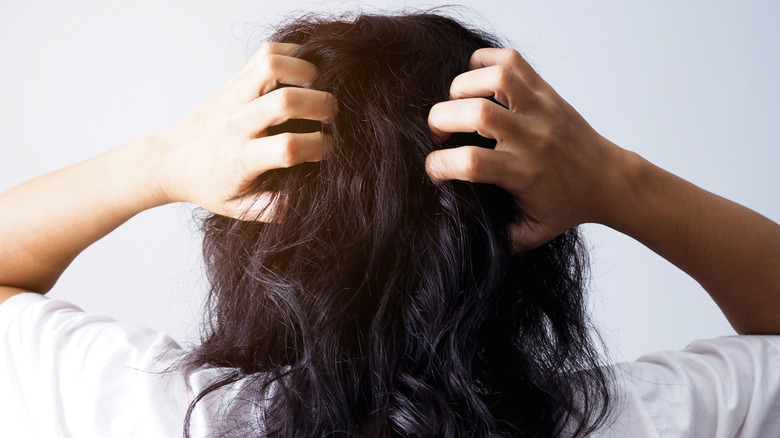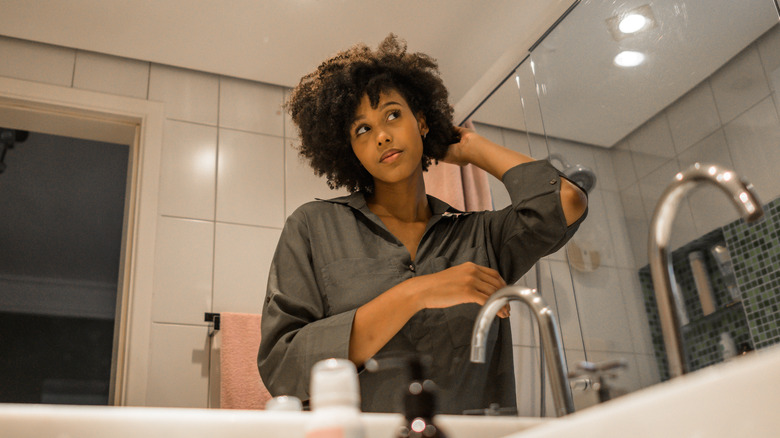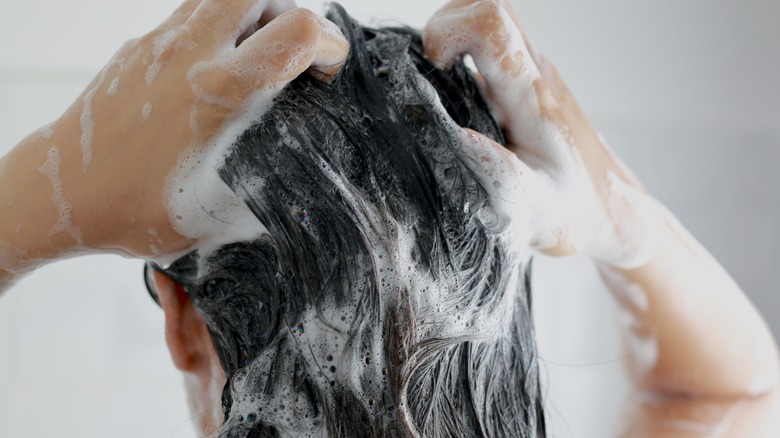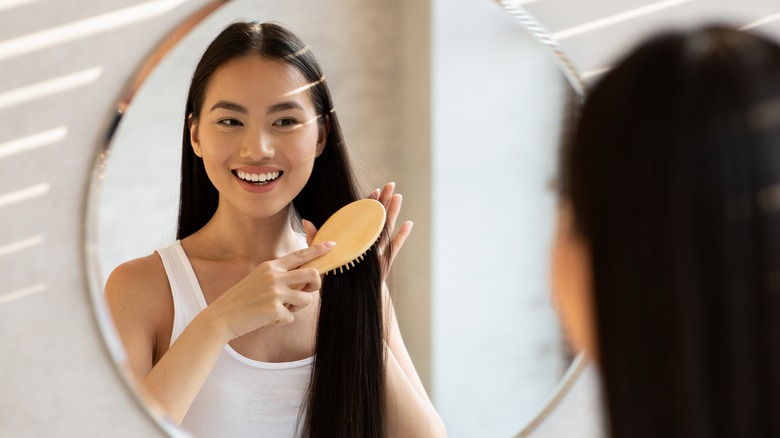How To Identify And Care For Combination Hair
If you've ever experienced parts of your hair being laden with oil and other parts being dry, then you may have combination hair. The term "combination" in the beauty sphere is usually used to refer to people with combination skin made up of oily and dry zones. However, the same thing can happen to your hair. You might be completely oblivious about your hair type, but it makes a huge difference when it comes to how you take care of it.
There are a myriad of reasons why different parts of your hair and head could be oily and dry at the same time. While it may seem harmless, having combination hair can greatly affect how your products act on your head and might be the reason why you can't retain your length. To know how to choose a haircare routine and products that work for your hair, you should be able to identify if you have combination hair.
Stress, hormone fluctuation, and your diet can cause combination hair
Combination hair occurs when your scalp and roots are typically more oily than your shaft and ends. According to the international education manager of Balmain Hair Couture Kasper Heemskerk via Byrdie, people with combination hair don't get their natural oils distributed evenly throughout the head. This makes their shafts and ends prone to breakage from lacking enough moisture.
Lots of factors come into play when it comes to combination hair. Head trichologist of Philip Kingsley, Anabel Kingsley, named "diet, menstrual cycle, and stress levels" as some of the reasons why people can have combination hair. It's more prominent in people with straight, long hair because they tend to have oilier roots, she explained. However, Gretchen Fries, BosleyMD-certified trichologist, noted that curly-textured hair is also prone to combination hair. This is because curls makes it more difficult for natural sebum to make its way down to the ends.
A good pre-poo treatment can minimize hair breakage before a shampoo
Having combination hair means you have to be extra wary of how you tailor your haircare routine. Since your oil distribution is not uniform, you have to take care to properly clean and nourish your scalp and roots while making sure your strands receive adequate moisturization.
Because shampoo works by stripping oil and dirt from the head and hair, using it on your shafts and ends can lead to even more breakage. Anabel Kingsley recommended using a pre-shampoo product that will remove buildup from the scalp. You can also use a scalp mask to moisturize your strands before the shampoo as a preventive measure.
It's important to know not to do too much with the shampoo. According to Kingsley, if you use too much shampoo or wash too frequently, you could cause your sebum glands to secrete even more oil to compensate for it. For those with fine-textured locks, she advised: "Don't wash more than once a day." For the curly combination ladies and gents, you can be a tad more lax when it comes to washing your hair and stretch your wash days out by three days.
Get a cleansing shampoo for your scalp and hydrating conditioner for your strands
Now that you've got your wash days down pat, you need to make sure you use shampoo and conditioner for oily hair. Because shampoo is a thorough cleanser, it should be used primarily on your scalp to get rid of all that oil and clean up the rest of your hair without drying it out. Kasper Heemskerk advised sticking with a shampoo that has a lightweight formula so that it won't weigh down your roots even more. You can opt for the Nexxus Hydra-Light Weightless Moisture Shampoo which also hydrates your hair.
You have to hydrate and moisturize your strands with conditioner after a shampoo. The best conditioner for dry hair will focus on repairing damage, moisturizing your strands, and restoring elasticity to them. The XHC Argan Oil Conditioner is a good option because it contains argan oil extract which is great for moisturizing hair.
Apply a moisturizer and leave-in to your shafts and ends
After your shampoo and conditioning treatment, you can't go wrong with a hydrating leave-in conditioner on your shafts and ends. For people with combination hair including a greasy scalp and brittle strands, this would go a long way in rejuvenating your dry locks. The Shea Moisture Manuka Honey & Yogurt Leave-In should help repair your hair and acts as a humectant to draw moisture from the atmosphere to your cuticles. After the extra hydration, you can also apply your hair cream or oil to lock in moisture and protect your ends from breakage.
With combination hair, you'll also want to steer clear of too much heat. If you've been blow drying and straightening your hair every day, put down the hot tools. Excess heat on hair prone to dryness spells breakage on a wider scale.
It's understandable if your daily activities call for pressed hair, so if you must apply heat, be sure to use a strong heat protectant for proper protection and use a low-heat setting. The TRESemmé Heat Defence Styling Spray not only shields your hair from damage but also glosses up your hair in the process.
Brush your hair thoroughly to help distribute excess oil from your roots
One of the main problems with combination hair is that the oil isn't spread throughout the hair, leaving some parts greasy and other parts dry. Board-certified dermatologist Dr. Elyse Love told Byrdie that a quick and easy way to distribute your sebum throughout your head is by dry brushing it. She also recommended brushing when you apply conditioner during your wash. You can dry brush your hair in the morning or in the night as part of your nighttime routine.
However, she warned against dry brushing coarse hair. "Straight hair can brush in the morning to help redistribute oils, but curly hair should never dry brush as this causes further breakage and damage," she explained.
Combination hair will definitely have you running around mixing and matching different products. However, if done well, you can manage your different hair zones just fine and keep your hair happy and healthy.





